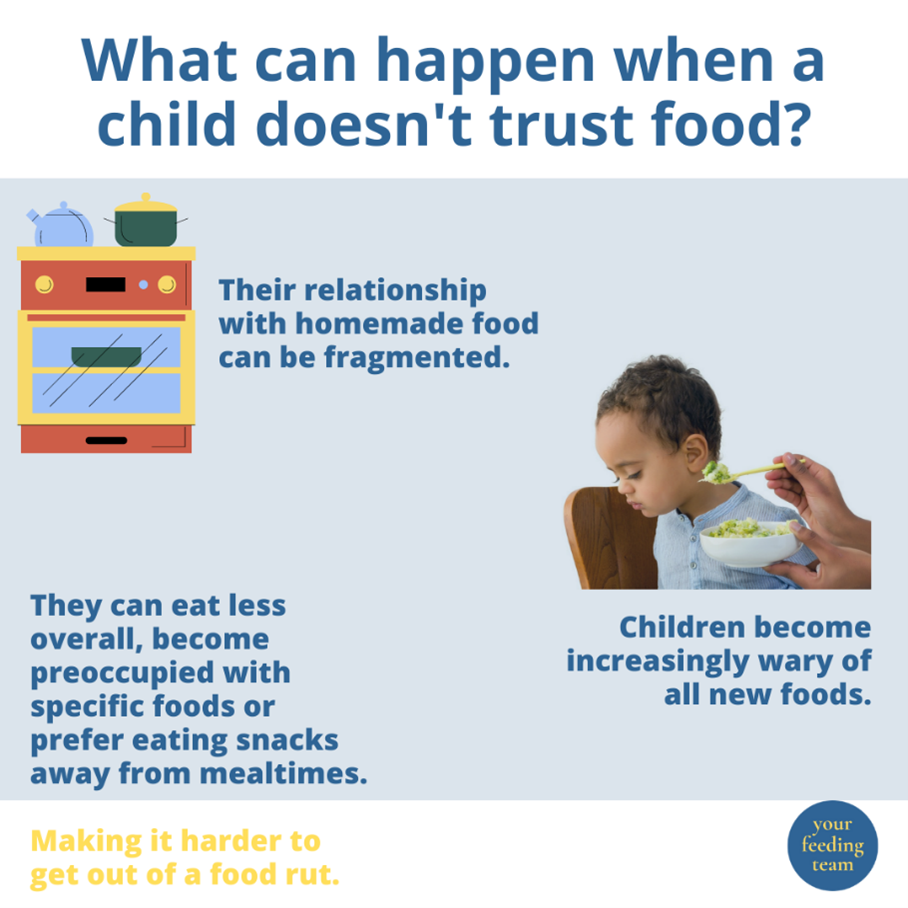Presenter: Simone Emery
Permalink: https://www.facebook.com/608936612/videos/10158007812301613/

Hi, this is Simone from Your Feeding Team and one of the admins of the parenting picky eaters group. I’m here with another learning module for you today. And this {video} is talking a little bit about why trust matters and focuses on one commonly asked question about hiding fruits and vegetables in food.
So, as you’ve noticed by now, respect for your child and respect for each other is part of what makes this group, parenting picky eaters, such a fantastic Facebook group. Thanks so much for going through these learning units to learn more about our ethos and understanding the guiding principles for responsive feeding and implementing it in your home to make your mealtimes happier. Underpinning these happy mealtimes and responsive feeding is a need for respect and trust.
There are a few “common wisdom” ideas out there about feeding children. You’ve probably heard them all before. Lots of them are feeding myths! {For example} one “solution” to picky eating that often gets offered is “why don’t you just hide the vegetables?” Sneaking. Smuggling. You’ve heard it all before! Now, it’s not that way are against something like a spinach and banana muffin, for example. Not in the slightest! {We think} having vegetables made portable and presented in a way that makes them easier for your child to eat is really important.
It depends on why they’re refusing food in the first place. But the element {associated with vegies in food} that damages trust the most is when we dupe our child into eating them. Or tell them that they’re actually “the same” as something that they already love (when we know they are not).
So, what can breeding distrust do to a child’s relationship with food? Well, it fragments a child’s relationship with homemade food. It can make them more wary of other new foods, and it’s harder for them to get out of the food rut that they may be getting into.

So, what can we do instead? Include children so they understand what tangible factors are in their food is a great idea. We are NOT talking about going over the top with food PR by really getting in there and telling them about things like vitamins and minerals, because honestly, a three-year-old can not understand what a vitamin is. It’s way above their cognitive level. In fact, children under 11 are really going to struggle with the concept {of nutrients}. All it does is make food even more confusing and baffling than before. So, A simple sentence, like “I made these muffins green by adding spinach to them. I’m wondering if they have a big smell or a little smell” – that’s enough to show them the tangible properties about food. And it’s pretty cool to explore foods.
We {don’t want to} add a lot of pressure here to children. We’re just engaging them, showing them and leading by example, that we think it’s kind of fun to explore foods too. What do you think about that language? {It can be as simple as} wondering and talking about colors. {I know it doesn’t} sound that hard, but sometimes we all need that little bit of inspiration. The best thing about joining your feeding team is that we really help you with loads of those little mindset shifts and language swaps that you can use every day. They’re really practical ways to turn around your mealtimes from being a stressful event (where you’re focused solely on trying to get nutrition down into your child’s stomach) rather than a happy mealtime full of investigation. So, if you want to dive into it and get to know some of those language, thought and mindset shifts, that will help you make happy mealtimes a reality, have a look at your feeding team and get to know more about the support we can offer you. Okay Bye!